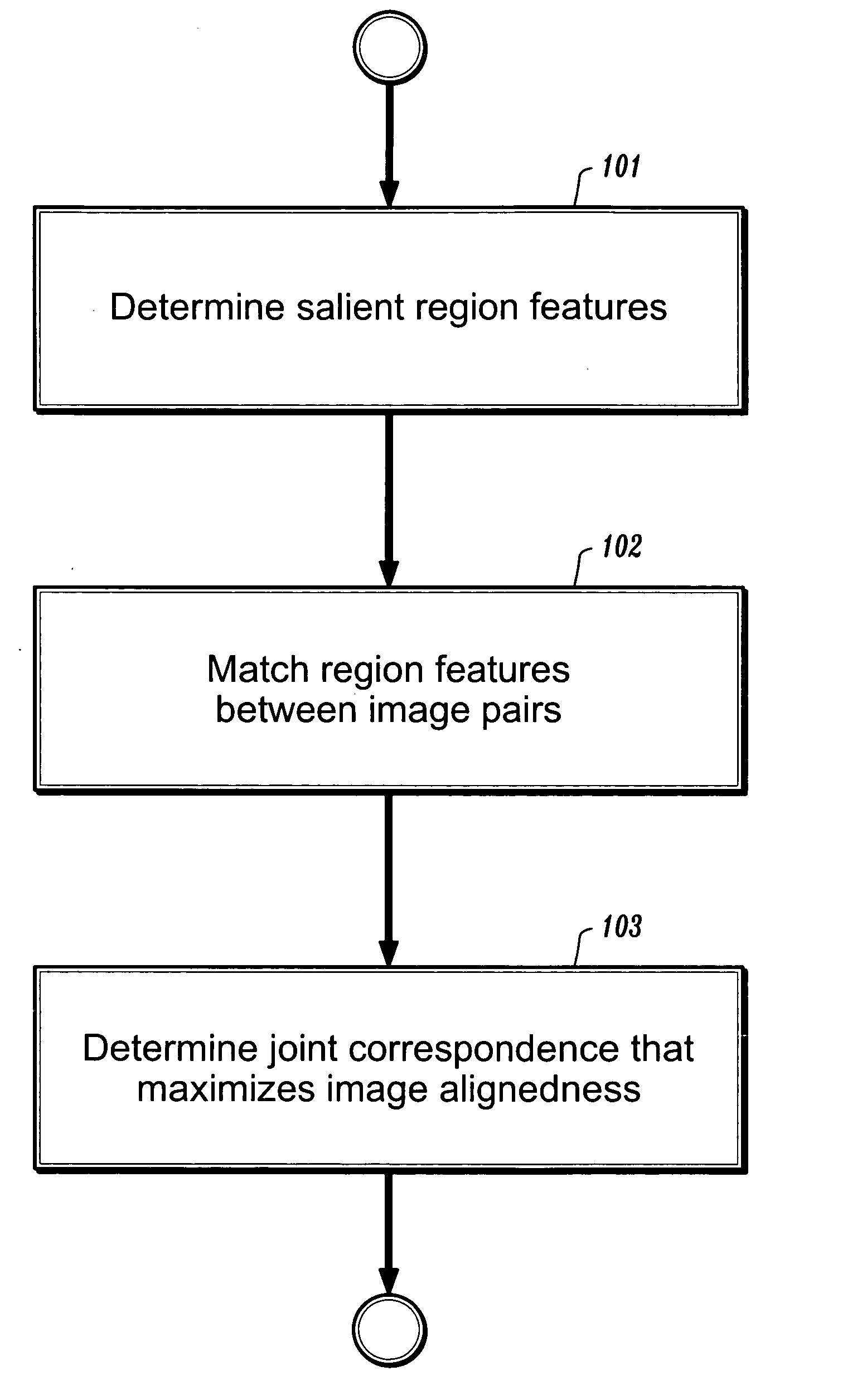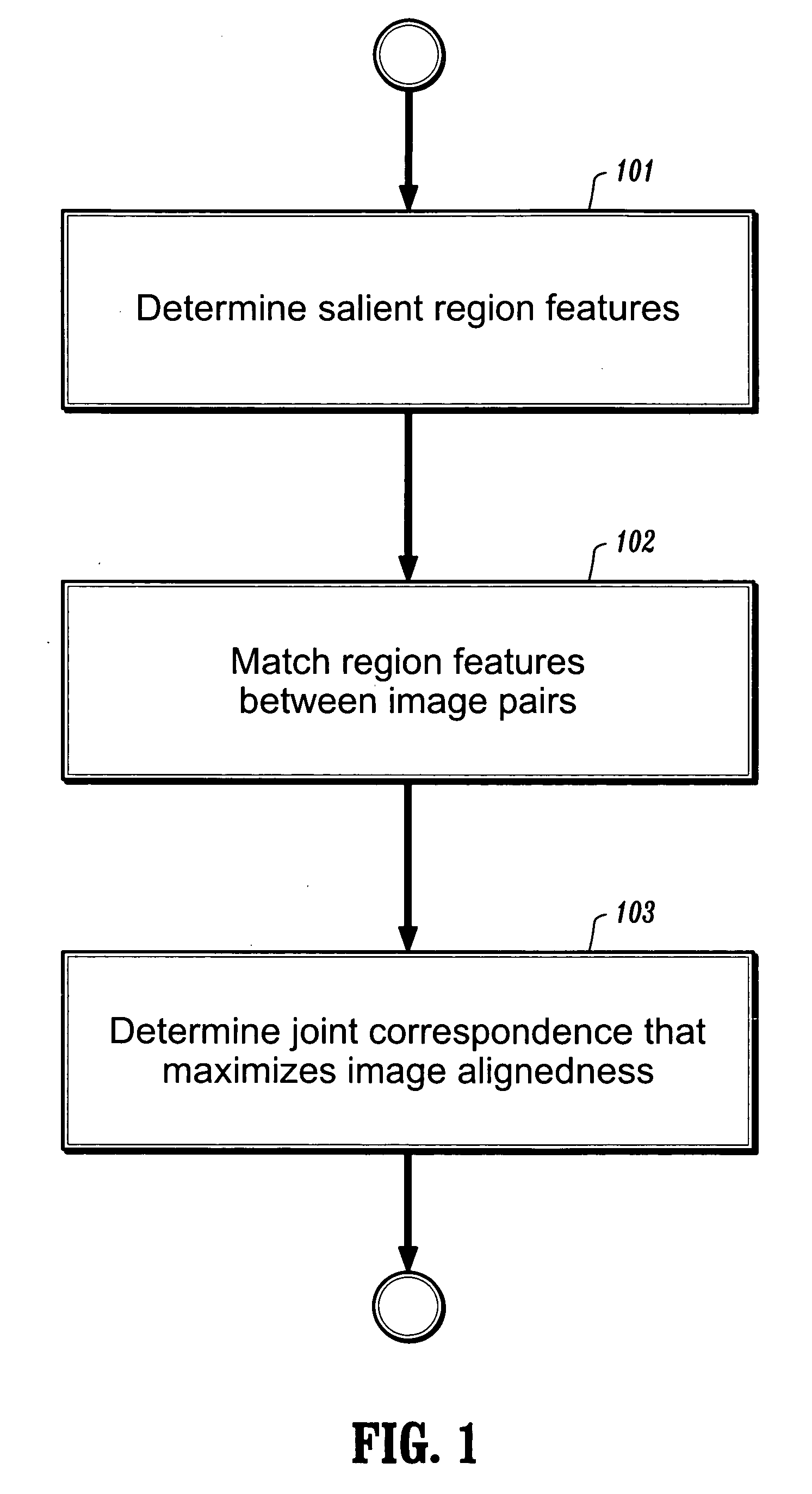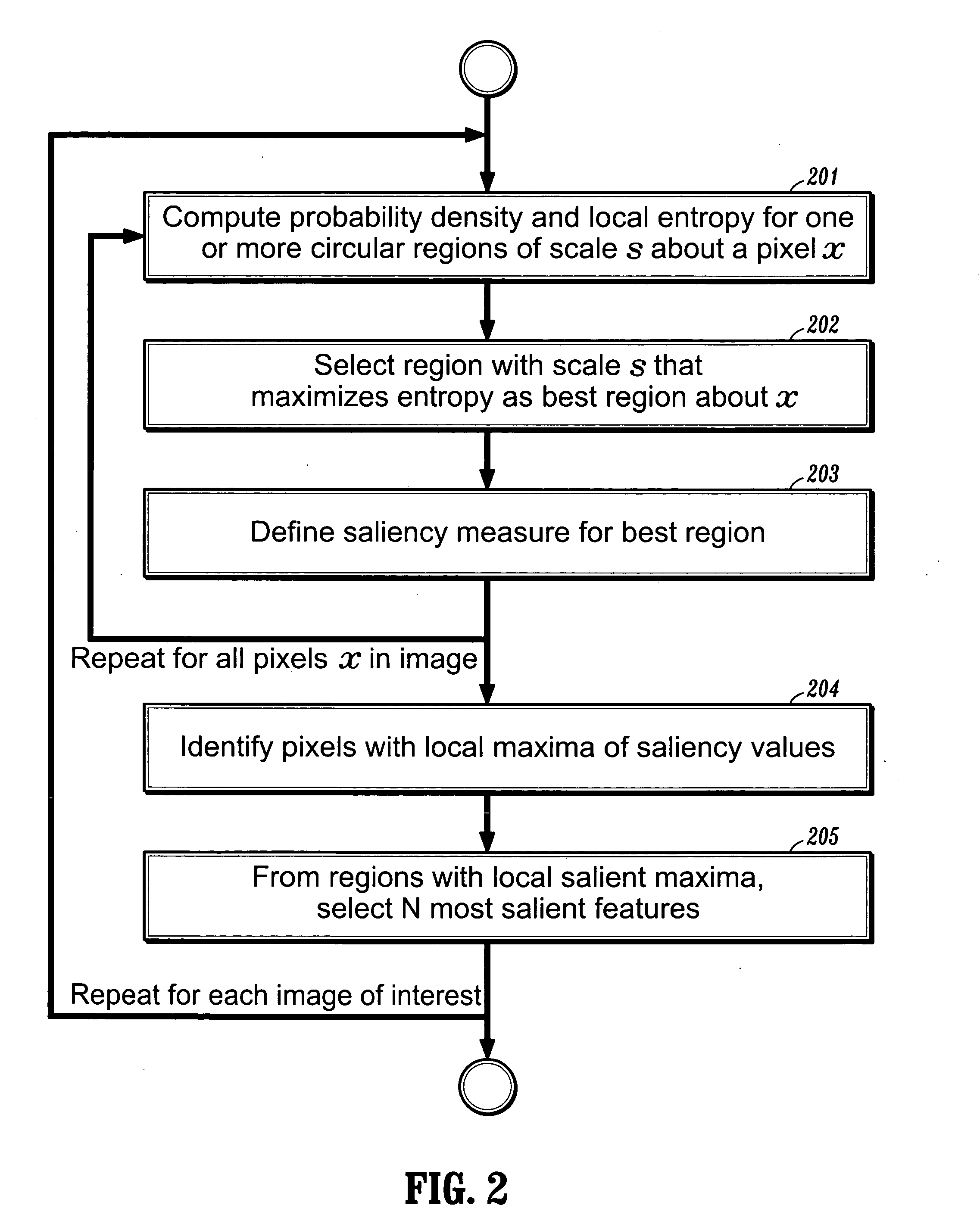Method and system for hybrid rigid registration based on joint correspondences between scale-invariant salient region features
- Summary
- Abstract
- Description
- Claims
- Application Information
AI Technical Summary
Benefits of technology
Problems solved by technology
Method used
Image
Examples
experiment 1
In the first controlled experiment, the invariance properties with respect to scaling, rotation, and translation are studied. The PD image is used as the fixed image, and different moving images are simulated by artificially transforming the T1 image with controlled parameters. The parameters are chosen according to the following four cases: Case 1: Invariance to scaling. Vary the scale factor σ in the range [0.5, 1.5], while holding fixed the translation (tx=0,ty=0) and rotation (Θ=0). Case 2: Invariance to rotation. Vary the rotation angle Θ in the range [-π2,π2],
while holding fixed the translation (tx=0,ty=0) and scaling factor (Θ=1). Case 3: Invariance to translation. Vary the translation parameters (tx,ty) in the range [−50,50], while holding fixed the rotation Θ and scale factor σ. Case 4: the combined effect of the transformation parameters. Vary all parameters simultaneously: (tx,ty) in the range [−50, 50], σ in the range [0.5, 1.5], and Θ in the range [-π2,π2].
In e...
experiment 2
In the second controlled experiment, robustness with respect to image noise is studied. The original PD image is used as the fixed image, and test moving images were generated by adding different levels of Gaussian noise to the original T1 image, and transforming the noise corrupted images according to random transformations. The Gaussian noise added has zero mean with standard deviation λ. All possible values for the standard deviation are between [0, 255]. Table 2 displays the three performance measures for three test cases. The three cases differ by the range of the standard deviation of the Gaussian noise added. For each case, 30 noise corrupted T1 images are generated and randomly transformed, where the transformation parameters vary in the same ranges as in the first controlled experiment. From the results, one can see that a preferred method is quite robust to high levels of noise. This is partly due to the stability of the entropy-based feature region detector and the robus...
PUM
 Login to View More
Login to View More Abstract
Description
Claims
Application Information
 Login to View More
Login to View More - R&D
- Intellectual Property
- Life Sciences
- Materials
- Tech Scout
- Unparalleled Data Quality
- Higher Quality Content
- 60% Fewer Hallucinations
Browse by: Latest US Patents, China's latest patents, Technical Efficacy Thesaurus, Application Domain, Technology Topic, Popular Technical Reports.
© 2025 PatSnap. All rights reserved.Legal|Privacy policy|Modern Slavery Act Transparency Statement|Sitemap|About US| Contact US: help@patsnap.com



